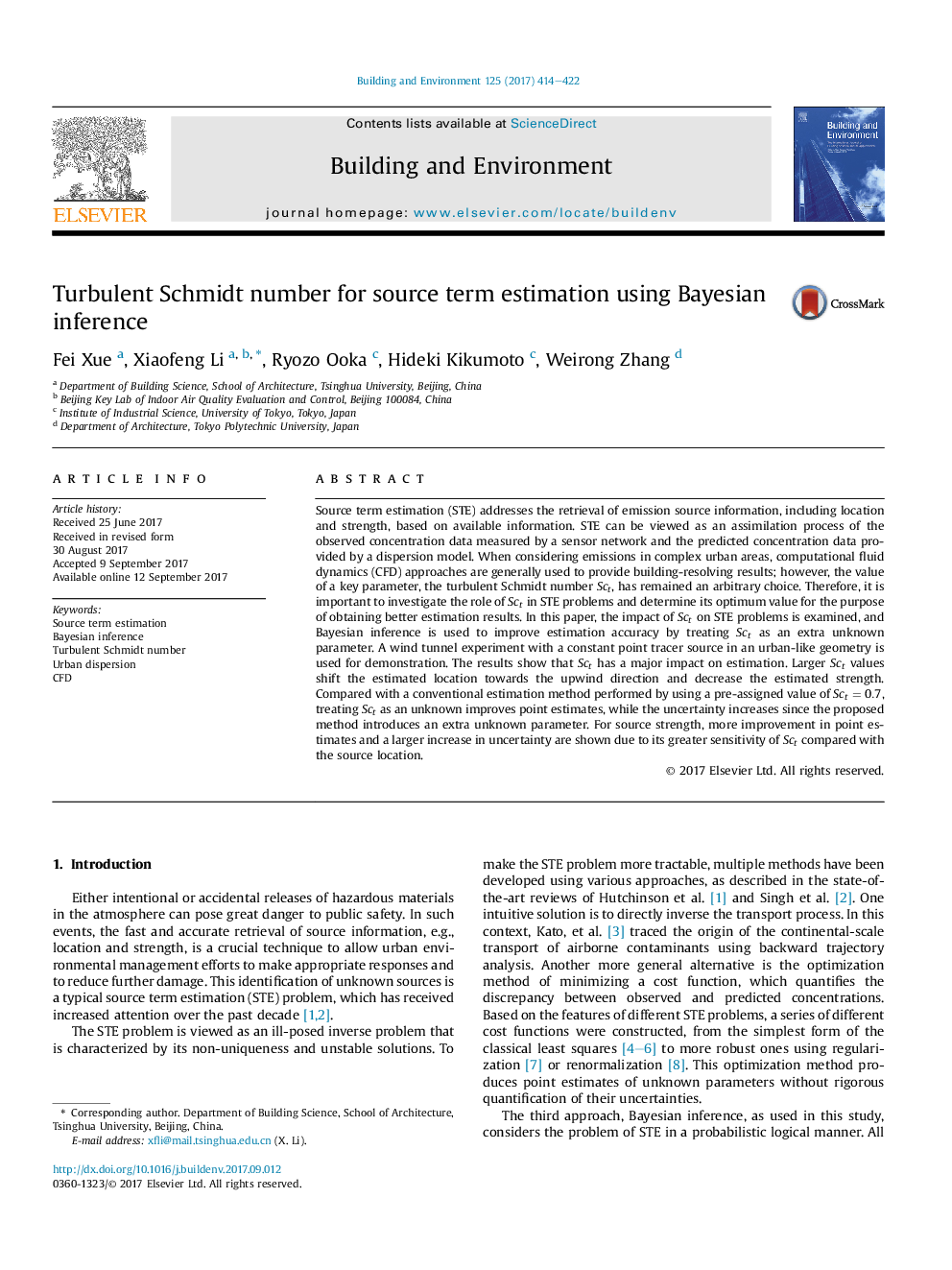| Article ID | Journal | Published Year | Pages | File Type |
|---|---|---|---|---|
| 6479240 | Building and Environment | 2017 | 9 Pages |
â¢We estimate the location and strength of a gaseous release in built-up areas.â¢We study the impact of Sct on the estimation results in the Bayesian framework.â¢A novel method is presented by treating Sct as an extra unknown parameter.â¢Presented method is evaluated with a wind tunnel release in an urban mock-up.â¢Presented method yields improved point estimates with increased uncertainties.
Source term estimation (STE) addresses the retrieval of emission source information, including location and strength, based on available information. STE can be viewed as an assimilation process of the observed concentration data measured by a sensor network and the predicted concentration data provided by a dispersion model. When considering emissions in complex urban areas, computational fluid dynamics (CFD) approaches are generally used to provide building-resolving results; however, the value of a key parameter, the turbulent Schmidt number Sct, has remained an arbitrary choice. Therefore, it is important to investigate the role of Sct in STE problems and determine its optimum value for the purpose of obtaining better estimation results. In this paper, the impact of Sct on STE problems is examined, and Bayesian inference is used to improve estimation accuracy by treating Sct as an extra unknown parameter. A wind tunnel experiment with a constant point tracer source in an urban-like geometry is used for demonstration. The results show that Sct has a major impact on estimation. Larger Sct values shift the estimated location towards the upwind direction and decrease the estimated strength. Compared with a conventional estimation method performed by using a pre-assigned value of Sct=0.7, treating Sct as an unknown improves point estimates, while the uncertainty increases since the proposed method introduces an extra unknown parameter. For source strength, more improvement in point estimates and a larger increase in uncertainty are shown due to its greater sensitivity of Sct compared with the source location.
